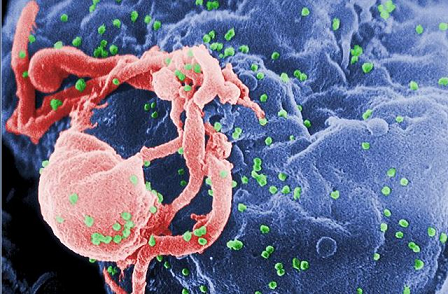|
|
|
Medical Pharmacology Chapter 36: Antiviral Drugs
Antiviral Drugs
Anti-viral drugs with activity against HIV (Human Immunodeficiency Virus)
 |
|
Introduction: Human Retroviruses
An early member of the family of viruses described as retroviruses is Rous sarcoma virus, which causes tumors in chickens.5
This retrovirus was so described over 100 years ago.
Retroviruses utilize an enzyme, reverse transcriptase, first identified in retroviruses.
Retroviruses depend on reverse transcriptase associated with the virion to make a fully double-stranded DNA copy from their single-stranded RNA virion genome.
Later, this DNA copy is translocated to the nucleus where a viral enzyme, integrase, catalyzes insertion of viral DNA into the cellular chromosome at random locations.5
Reverse transcriptase was discovered by Howard Temin and David Baltimore in 1971.5
|
|
|
Studies indicated that retroviruses could integrate a DNA copy of their RNA genome into infected cellular chromosomes.8
Later, Michael Bishop and Harold Varmus demonstrated that Rous sarcoma virus infection could cause tumors secondary to alteration of the cellular gene (termed "oncogene") due to the virus.9
AIDS was first identified as a possible disease in 1981 when the CDC (Centers for Disease Control and Prevention) in the United States noted an unexpected occurrence of Pneumocystis jirovecii, a fungus, (previously described as P. carinii) pneumonia in five previously healthy homosexual men in Los Angeles.2
|
|
|
|
|
|
|
|
|
|
|
Also, Kaposi's sarcoma (KS) with or without P. jiroveci pneumonia in 26 previously healthy homosexual men in New York and Los Angeles.
|
|
|
|
|
|
|
|
|
AIDS was also identified in:
Male and female injection drug users
Hemophiliacs in blood transfusion recipients
Among female sexual partners of men with AIDS.
In addition, the disease was also found in infants born to mothers with AIDS or with an injection drug use history.2
|
|
This Web-based pharmacology and disease-based integrated teaching site is based on reference materials, that are believed reliable and consistent with standards accepted at the time of development. Possibility of human error and on-going research and development in medical sciences do not allow assurance that the information contained herein is in every respect accurate or complete. Users should confirm the information contained herein with other sources. This site should only be considered as a teaching aid for undergraduate and graduate biomedical education and is intended only as a teaching site. Information contained here should not be used for patient management and should not be used as a substitute for consultation with practicing medical professionals. Users of this website should check the product information sheet included in the package of any drug they plan to administer to be certain that the information contained in this site is accurate and that changes have not been made in the recommended dose or in the contraindications for administration. Advertisements that appear on this site are not reviewed for content accuracy and it is the responsibility of users of this website to make individual assessments concerning this information. Medical or other information thus obtained should not be used as a substitute for consultation with practicing medical or scientific or other professionals. |